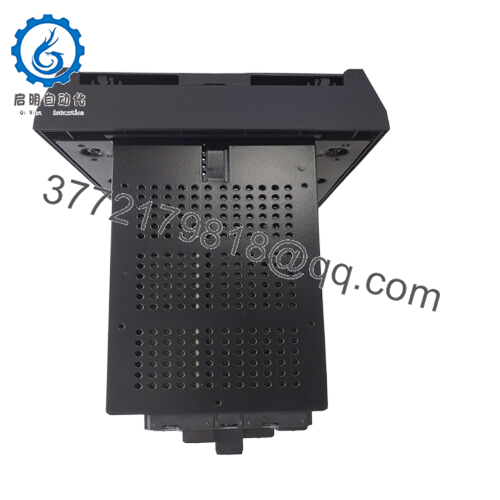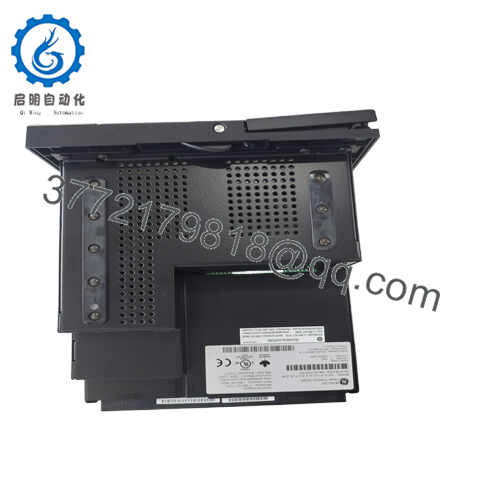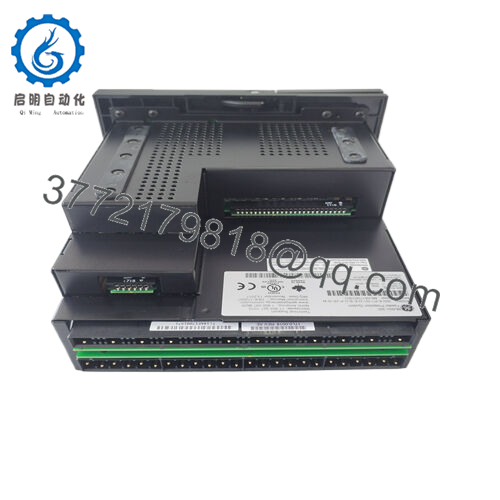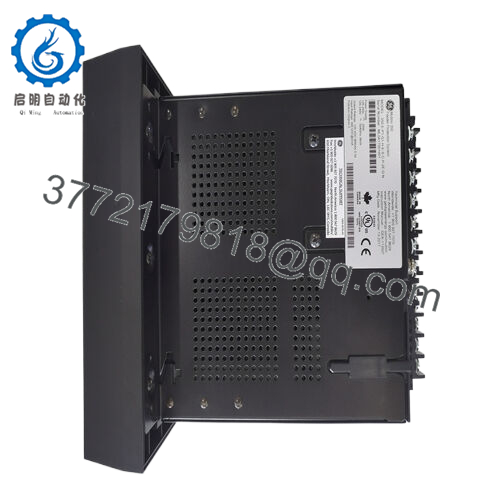Description
In the volatile realm of medium-voltage power distribution, undetected feeder faults can escalate into widespread disruptions—consider a utility substation where an unbalanced load from distributed renewables triggers overcurrent without selective tripping, cascading into equipment damage and hours of blackout, or an industrial plant where earth faults in motor feeders evade coordination, risking arc flashes and production halts that erode margins. These scenarios plague process control environments, where legacy relays often lack the agility to handle harmonics, voltage sags, or multi-shot autoreclosing without false interventions, leading to integration complexities, extended diagnostics, and compliance headaches in high-reliability setups. The GE 350-E-P1-G1-H-E-S-C-P-2E-D-N steps in as a versatile feeder protection relay from GE Multilin’s 350 series, engineered for comprehensive safeguarding of overhead, cable, and transformer feeders with advanced logic for phase, ground, and neutral elements, ensuring signal reliability and seamless coordination in dynamic grids.
This relay becomes essential in radial or looped networks, such as upgrading aging IAC or MDP electromechanical units, where modular drawout designs enable testing without rewiring, or in manufacturing with variable drives demanding cold load pickup to avoid nuisance trips during restarts. In a wind farm collector circuit, for instance, it processes sensitive earth faults amid intermittent generation, delivering high-fidelity I/O signals to prevent voltage instability that could sideline turbines. For oil and gas gathering lines exposed to corrosive soils or remote EMI, the GE 350-E-P1-G1-H-E-S-C-P-2E-D-N incorporates conformal coating for endurance, upholding system stability without compromising on multi-setting groups for seasonal adaptations. It’s particularly valuable for scalable deployments in multi-bay switchgear, where its IEC 61850 compliance bridges to DCS or SCADA without proprietary gateways, focusing on your aims of minimized downtime and enhanced event analysis in harsh enclosures.
What sets it apart in industrial automation is its emphasis on practical resilience: supporting 1 A CT inputs for precise metering in low-load scenarios, it adapts to neutral schemes from solidly grounded to resonant without hardware changes. In vibration-intense sites or dust-laden vaults, its harsh-environment hardening isolates analog paths, while GOOSE messaging enables peer-to-peer status sharing for faster interlocks. For engineers balancing cost with coverage, the GE 350-E-P1-G1-H-E-S-C-P-2E-D-N streamlines commissioning with pre-configured templates, shifting from reactive fault chasing to proactive optimization, fortifying process control where feeder integrity directly powers productivity.
- 350-E-P1-G1-H-E-S-C-P-2E-D-N
- 350-E-P1-G1-H-E-S-C-P-2E-D-N
- 350-E-P1-G1-H-E-S-C-P-2E-D-N
Positioning the GE 350-E-P1-G1-H-E-S-C-P-2E-D-N in your protection architecture places it as the frontline coordinator for feeder bays, ingesting current/voltage inputs from CTs and PTs to drive trip logic for breakers and reclosers in MV panels. From GE’s Multilin ecosystem, it mounts in drawout cases via standard cutouts, linking substation-wide via rear Ethernet for IEC 61850 Edition 2, while protocols like DNP3 or Modbus uplink metrics to SCADA for fleet oversight. In the hierarchy, it sits at the bay level, above field transducers but below gateway layers, with up to 24 binaries for control and 12 metering channels to support autoreclose schemes or synchro-check.
In daily operation, it layers functions: instantaneous overcurrent for phase bolts, directional elements for reverse power, and breaker-failure initiation to reroute in under 50 ms, all tunable via EnerVista software for curve selectivity. Phasor measurements (class 0.5 accuracy) and disturbance recording at 64 samples/cycle arm HMI oscillography, with self-supervision alerting to CT drift or comms faults through front LEDs—ideal for remote process control where access is sparse. Redundancy via PRP/HSR sustains links during fiber breaks, and its multi-shot recloser (up to 4 attempts) minimizes outages in overhead lines. This isn’t isolated gear; it synergizes with upstream 750P busbars or downstream 469 motors, zoning defenses fluidly.
For backplane-free panels, the GE 350-E-P1-G1-H-E-S-C-P-2E-D-N eases setup with USB configuration and simulation modes, turning fragmented feeders into smart segments that anticipate harmonics from VFDs, advancing power system automation from basic tripping to intelligent management.
| Specification | Details |
|---|---|
| Model Number | 350-E-P1-G1-H-E-S-C-P-2E-D-N |
| Brand | GE Multilin |
| Type | Feeder Protection Relay (350 Series) |
| Input Voltage | 88-300 VDC |
| Operating Temp Range | -40°C to 85°C |
| Mounting Style | Drawout Case |
| Dimensions | 145 x 177 x 161 mm |
| Weight | 4.5 kg |
| Interface/Bus | Ethernet (Rear), RS-485 |
| Compliance | IEC 61850, CE, UL, RoHS |
| Supported Protocols | DNP3, Modbus, IEC 61850 GOOSE |
| Typical Power Draw | 15 W |
Deploying the GE 350-E-P1-G1-H-E-S-C-P-2E-D-N yields a fortress of fault selectivity that endures grid gyrations, its adaptive overcurrent stages—IDMT curves with 1% precision—clearing disturbances in <30 ms to forestall arc escalation and gear strain in looped feeders. This sharpness sustains load balance by modeling cold pickup for inrush immunity, trimming interventions that hobble renewables, while voltage/reactive metering (class 1) enables demand profiling without extra devices, honing opex in energy-tight sites.
The value compounds in stewardship: event buffers (up to 500 records at 8 kHz) provision waveform forensics that slash root-cause timelines from days to diagnostics, while conformal coating wards against 85°C ambients or 100% humidity, upholding calibration over cycles for deferred verifications in compliant ops. Engineered for grit in coastal or industrial vaults, it integrates IEC 61850 to reuse station buses, cutting wiring overhead and hastening expansions like capacitor banks.
Long-term, it optimizes ecosystem thrift—low 15 W consumption eases UPS sizing, while extensible binaries streamline interlocking for sleeker panels that adapt to bay growth. In high-reliability pursuits, the GE 350-E-P1-G1-H-E-S-C-P-2E-D-N curbs lifecycle exposures, from autoreclose that restores 95% of transient faults to condition monitoring that signals breaker wear early, crafting a feeder framework that thrives amid variability in power distribution.
In utility radials, the GE 350-E-P1-G1-H-E-S-C-P-2E-D-N oversees overhead taps, invoking directional earth guards under stormy spans to secure critical system uptime in power environments where isolation averts flicker cascades. Its high-reliability neutral elements process I/O signals from CTs, ensuring pinpoint quarantines.
Data centers harness it for UPS feeders, scrutinizing harmonics from servers in chilled bays—affording multi-shot reclose for seamless backups where signal exactitude guards uptime. In mining substations, it patrols conveyor ties amid dusty jolts, bolstering modular voltage supervision for haul continuity. These applications entrench the GE 350-E-P1-G1-H-E-S-C-P-2E-D-N as a resilient ranger in rugged, load-labile power systems, where fault finesse fuels automation imperatives.
350-E-P5-G5-H-E-S-C-N-3E-D-N – Higher CT ratio variant for heavy-load industrial feeders with enhanced metering.
350-E-P1-G1-H-E-M-C-N-2E-D-N – Compact model with Modbus focus for SCADA-centric utilities.
350-LP0G0HAMCW3ENN – Low-profile retrofit kit for IAC electromechanical upgrades.
750P – Upstream bus differential companion for substation coordination.
469 – Downstream motor relay for integrated drive protection.
SR760 – Transformer-focused alternative with overflux emphasis.
T60 – Transformer relay extension for HV tie-ins.
F60 – Feeder variant with arc-flash add-ons for enclosed gear.
Before case-inserting the GE 350-E-P1-G1-H-E-S-C-P-2E-D-N, verify drawout alignment—standard 19″ cutouts require snug seals to repel dust, and fit IP54 gaskets in wet zones. Confirm aux power at 88-300 VDC with clamps for surges over 1 kV, as dips skew pickups; buffer with regulators if inverter noise lurks. Sync firmware to EnerVista’s latest via download—outdated loads snag GOOSE, stalling intertrips.
In the field, vigilance tunes to schedule-friendly checks. Weekly, poll the HMI for self-test overviews—clean audits mean proceed, but pending cues trigger a waveform export for pattern parsing. Biannually, inject secondaries to affirm trip fidelity within 2%, and calibrate analogs against standards to hold under 0.5%, while Ethernet audits curb packet loss in networked holds. Quarterly terminal buffs fend corrosion in coastal dens, twinned with annual scheme simulations using test sets to probe selectivity. Guided by GE’s relay manual, this flow keeps the GE 350-E-P1-G1-H-E-S-C-P-2E-D-N as a self-reliant scout, demanding little for maximal grid guardianship.





 WhatsApp: +86 16626708626
WhatsApp: +86 16626708626 Email:
Email:  Phone: +86 16626708626
Phone: +86 16626708626





